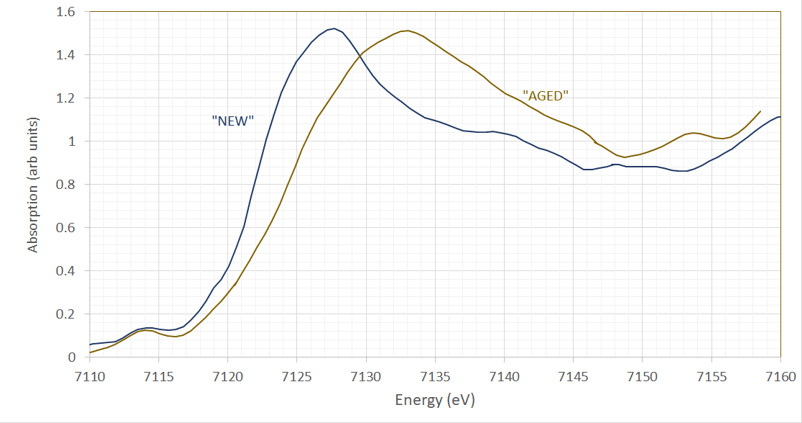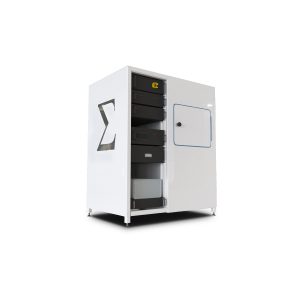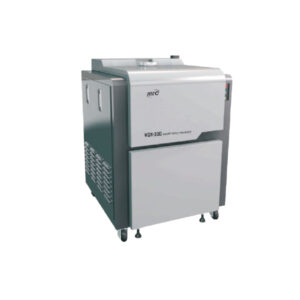The SIGRAY QuantumLeap p-H2000 is an advanced X-ray Absorption Spectroscopy (XAS) system designed to deliver exceptional performance. As a result of its high resolution and sensitivity, this system provides detailed elemental and chemical state analysis.
The QuantumLeap p-H2000 offers synchrotron-like performance in a laboratory setting, besides, making it an invaluable tool for researchers. Additionally, it supports both fluorescence and transmission modes, covering a broad energy range for comprehensive analysis. Consequently, whether for life sciences, environmental studies, or materials science, the SIGRAY QuantumLeap p-H2000 ensures precise and reliable results.
Features of SIGRAY QuantumLeap p-H2000
Synchrotron-Like Performance
The only laboratory XAS system with synchrotron-like performance, providing high-resolution and high-sensitivity analysis.
Rapid XANES and EXAFS
Achieves XANES at 0.5 eV and EXAFS within seconds, ensuring quick and accurate results.
Fluorescence Mode XAS
Supports fluorescence mode XAS, enabling the analysis of low concentration samples with high precision.
First Laboratory Fluorescence XAS
Enables the first laboratory fluorescence XAS, making it possible to analyze low concentration samples effectively.
Wide Energy Range
Covers an energy range from 4.5 keV to 25 keV, suitable for analyzing a variety of elements.
Broad Elemental Coverage
Encompasses transition metals such as titanium and platinum, as well as lanthanides, providing comprehensive analysis capabilities.
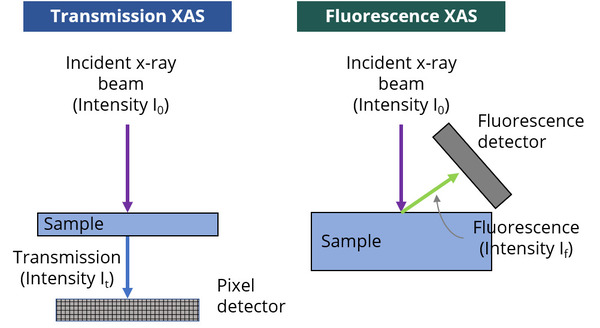
Optimized for Diverse Sample Analysis with QuantumLeap-H2000
Transmission-mode XAS (left) measures how many X-rays are transmitted through the sample, meanwhile fluorescence-mode XAS (right) measures the number of fluorescent photons emitted by the sample. Both methods determine how absorbing the sample is. Whereas fluorescence mode XAS works better for thicker samples and samples of lower concentrations, transmission mode XAS is more suitable for samples of higher concentrations. Certainly, the QuantumLeap-H2000 provides access to both modes.
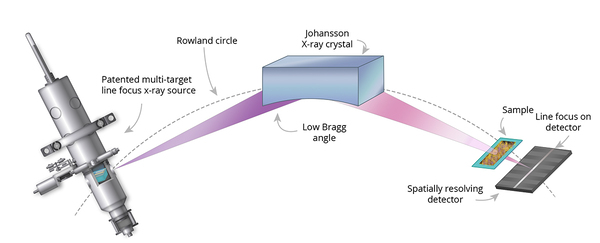
Innovative Line Focus X-Ray Source and Low Bragg Angle XAS Acquisition with Johansson X-Ray Crystal in QuantumLeap-H2000
QuantumLeap-H2000 uses a unique line focus X-ray source and achieves XAS acquisition at low Bragg angles, enabled by the use of a Johansson X-ray crystal.
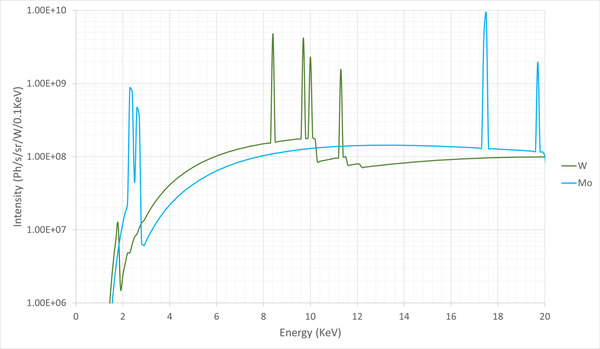
Achieving a Smooth Spectrum for XAS with Mo and W Target Materials in QuantumLeap-H2000
Mo (blue) has characteristic X-ray lines around 2 to 3 keV and 17.4 keV, while W (green) has characteristic energies in the 7 to 12 keV range. By selecting target materials, characteristic lines can be avoided so that a smooth spectrum of energies is acquired for a full range between 4.5 to 25 keV.

Intuitive Workflow and Real-Time Spectrum Display with QuantumLeap Software
QuantumLeap software follows an intuitive workflow in which the element of interest is selected and suggested settings are loaded. Users then input options such as exposure times and number of images. Eventually the acquired spectrum is displayed in real time during collection.
Application
- Catalysts
- Batteries and Fuel Cells
- Nanoparticles and Nanotubes




